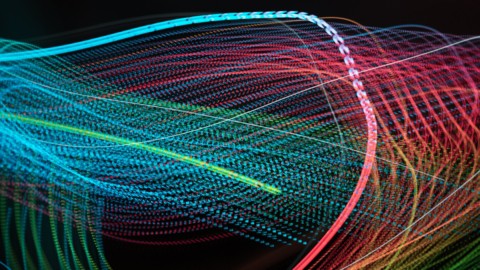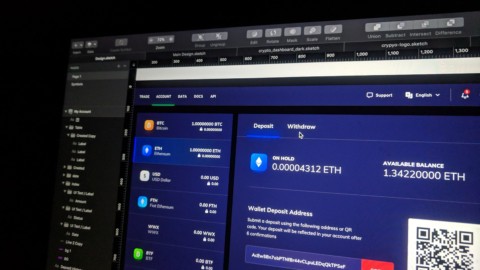Automated invoicing, otherwise known as EDI invoicing, is becoming increasingly important in modern commerce. Businesses today are demanding more granular data from one another than ever before. Meanwhile, across the world, expectations regarding data transparency and speed are rising rapidly, and governments are introducing complicated e-invoicing legislation. But what exactly is EDI invoicing, how does it work, and what makes a successful solution?
In this article we answer some of the most common questions in order to help you make the right choices moving forwards.
What is EDI invoicing?
EDI invoicing refers to the electronic exchange of invoice information between business partners using standardised electronic file formats.
Unlike traditional paper-based invoicing or PDF invoicing via email, EDI invoicing is a fully automated process. Relevant data is first converted to an agreed, computer-readable format, and sent via a secure protocol to the recipient. The recipient’s system then decodes the message and stores the data in the appropriate place in their ERP system. Crucially, this process happens instantly and requires no manual data input, meaning it is both fast and reliable
How difficult is EDI invoicing?
Implementing EDI invoicing poses various challenges, and as such demands careful consideration and planning.
The most technically challenging hurdle is setting up the technical connections, as this requires expertise in electronic communication protocols and data formats. In order to minimise the potential for errors, it’s important that the mapping stage in particular is thorough and includes comprehensive testing. If this stage is rushed or overseen by inexperienced individuals, the efficiency of the solution will suffer.
Another aspect of EDI invoicing that is difficult to manage is keeping track of relevant legislation. E-invoicing regulations not only differ from country to country, but are also constantly being amended, and given the consequences for non-compliance can be severe, it’s important to keep your system up-to-date.
Integrating your solution into your existing ERP system is another hurdle that many struggle with. For an EDI invoicing solution to be successful it’s important that relevant teams can access data quickly and easily – ideally via a user interface that they are already familiar with. If access is limited to a few individuals or data is hard to locate, invoicing processes will quickly become a bottleneck.
Thankfully, however, a good invoicing solution can handle all of these challenges… and as we will see in the following section, will also deliver many benefits.
Why should businesses consider implementing EDI invoicing?
Whether or not e-invoicing is mandatory where you operate yet, implementing an efficient EDI invoicing system is a good idea thanks to the plethora of benefits the technology offers, including…
- Increased efficiency: Automation of the invoicing process leads to quicker processing and payment, reducing manual errors.
- Cost savings: EDI invoicing enables businesses to save money by streamlining processes, reducing paperwork, and minimising errors.
- Reliability: Automated invoicing ensures standardisation of information and greatly reduces the risk of messages being lost.
- Improved data visibility: B2B e-invoicing makes finding and storing invoice information easy. The best solutions also utilise APIs in order to allow users to see message statuses in real-time.
- Better partner relations: The more advanced your system, the better placed you will be to meet the needs of partners and demand additional data from them.
For a more thorough breakdown of the benefits that e-invoicing can provide, feel free to download our stat-filled infographic on this topic.
What are the most common mistakes when implementing automated B2B invoicing?
Implementing an EDI invoicing solution is a complicated process. With so much technical work involved, there is a lot that can go wrong. Most issues, however, can be traced back to one of the following three common mistakes:
- Failing to plan: Unfortunately the most common approach when it comes to implementing a new EDI invoicing system is to put it off for as long as possible, and then rush the ultimate project. Unsurprisingly this is not a successful strategy. Rather than having your timelines dictated by external factors, it is best to assess your requirements and conduct research proactively.
- Overestimating internal capability: Setting up and maintaining a successful EDI invoicing solution requires both time and technical expertise. Many businesses simply assume their IT team can handle the job and end up struggling with errors and compliance issues as a result.
- Not prioritising flexibility: Given the pace of change when it comes to B2B process automation, and invoicing automation in particular, having a solution that can adapt is crucial. It is no longer enough for your solution to be able to cope with your current invoicing requirements. It must also be able to accommodate evolving partner requirements, geographical expansion, new legislation and technical developments. Without such flexibility, your EDI invoicing solution will quickly become a bottleneck.
Which industries benefit most from EDI invoicing?
While virtually every industry can benefit from EDI invoicing, the industries likely to benefit most financially are those in which high numbers of orders and invoices are exchanged on a daily basis. For example, GS1 UK has estimated that the UK grocery industry alone saves around £650 million every year thanks to EDI.
However, cost benefits are not the only benefits that matter. For example, the reliability and efficiency offered by EDI invoicing is invaluable for many industries, particularly the automotive, pharmaceutical, and logistics industries. Similarly, the message traceability offered by EDI is hugely useful to certain industries.
What are the options for integrating e-invoicing?
There are three main ways that businesses can integrate EDI invoicing with their existing systems. They can opt for local EDI software, a software as a service (SaaS) approach, or a fully managed “e-invoicing as a service” solution.
Which option is best for you will depend largely on your capacity to handle EDI work in-house. For more information on how much internal work is required to operate each of these three solution types, see our downloadable infographic on this topic.
Is EDI invoicing secure?
Yes, EDI invoicing is secure. In fact, it’s more secure than virtually every other method of B2B communication! A key reason for this is that EDI invoicing relies on encryption and authentication to ensure data protection. This means that senders can be sure messages won’t be received by anyone other than their intended target.
In particular, digital signatures play a crucial role in enhancing data confidentiality and ensuring the authenticity, integrity, and non-repudiation of the information in EDI invoices. Digital signatures use asymmetric key cryptography, where a private key is used to create the signature, and a corresponding public key is employed to verify its authenticity.
Moreover, the most popular EDI protocols used to exchange the messages, such as AS2 and SFTP2, also offer impressive security features.
What are the key features of a successful EDI invoicing solution?
On the face of it, the job of an EDI invoicing solution is simple – transport data from A to B quickly, accurately and securely. However, some invoicing solutions are far more effective at doing this than others. The three main areas in which good and bad invoicing solutions differ are as follows…
- Technical capability. As every business has different requirements, a good EDI invoicing solution should be able to send and receive messages via a wide variety of different protocols and formats. In particular, it’s essential that your solution can exchange messages via the Peppol network, as Peppol’s usage is growing year on year and is mandated by many countries for e-invoicing.
- ERP system integration. The best EDI invoicing systems can be integrated directly into your existing ERP system. As well as making the solution easier to use (as the system is already familiar to users), this also improves data visibility and makes error correction simple. For example, ecosio’s e-invoicing solution utilises an API connection to provide users with end-to-end message visibility. Plus, thanks to the nature of the integration, users can also locate messages instantly via a powerful full-text search functionality.
- Flexibility. As we’ve already covered, not prioritising flexibility is one of the most common mistakes that businesses make when selecting an EDI invoicing solution. It is virtually impossible to know what your technical requirements will be in one or two years, let alone further into the future. From legislative developments and evolving industry standards to an evolving partner landscape, a lot can change, and having an invoicing solution that can cope could be the difference between growth and stagnation. Beyond simply supporting growth, an industry-leading solution such as ecosio’s can actively stimulate it.
What does the future hold for EDI invoicing?
As automation becomes increasingly central to business processes and countries introduce more complicated e-invoicing regulations, having a reliable EDI invoicing solution will be extremely valuable moving forward.
But invoicing is only one small corner of B2B communication. Ultimately it’s only a matter of time before automation is expected across all B2B processes, from ordering to logistics. And while it’s impossible to say exactly how new technologies such as blockchain, AI and RPA will impact developments in the B2B integration space, one thing is certain – EDI and e-invoicing are going nowhere anytime soon.
Want to see how ecosio’s EDI invoicing solution could benefit you?
For more details on ecosio’s unique E-invoicing as a Service approach and how it could help you to make invoicing effortless, get in touch today. We’ve helped hundreds of businesses to transform their B2B integration processes and would love to help you do the same!
Want to stay up-to-date with e-invoicing news?
Sign up to our bi-monthly newsletter and get a rundown of recent e-invoicing developments, plus useful e-invoicing assets straight to your inbox.












